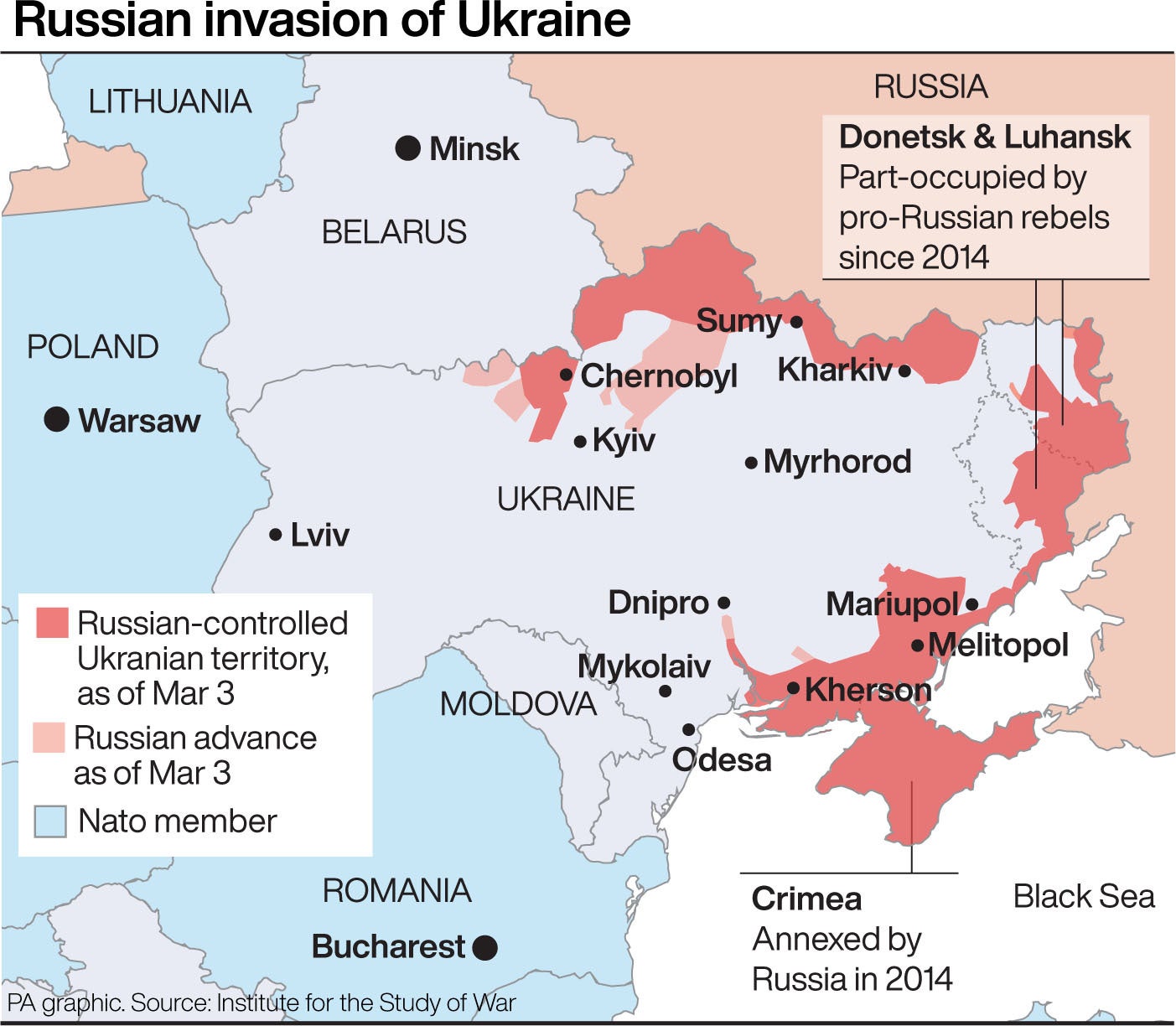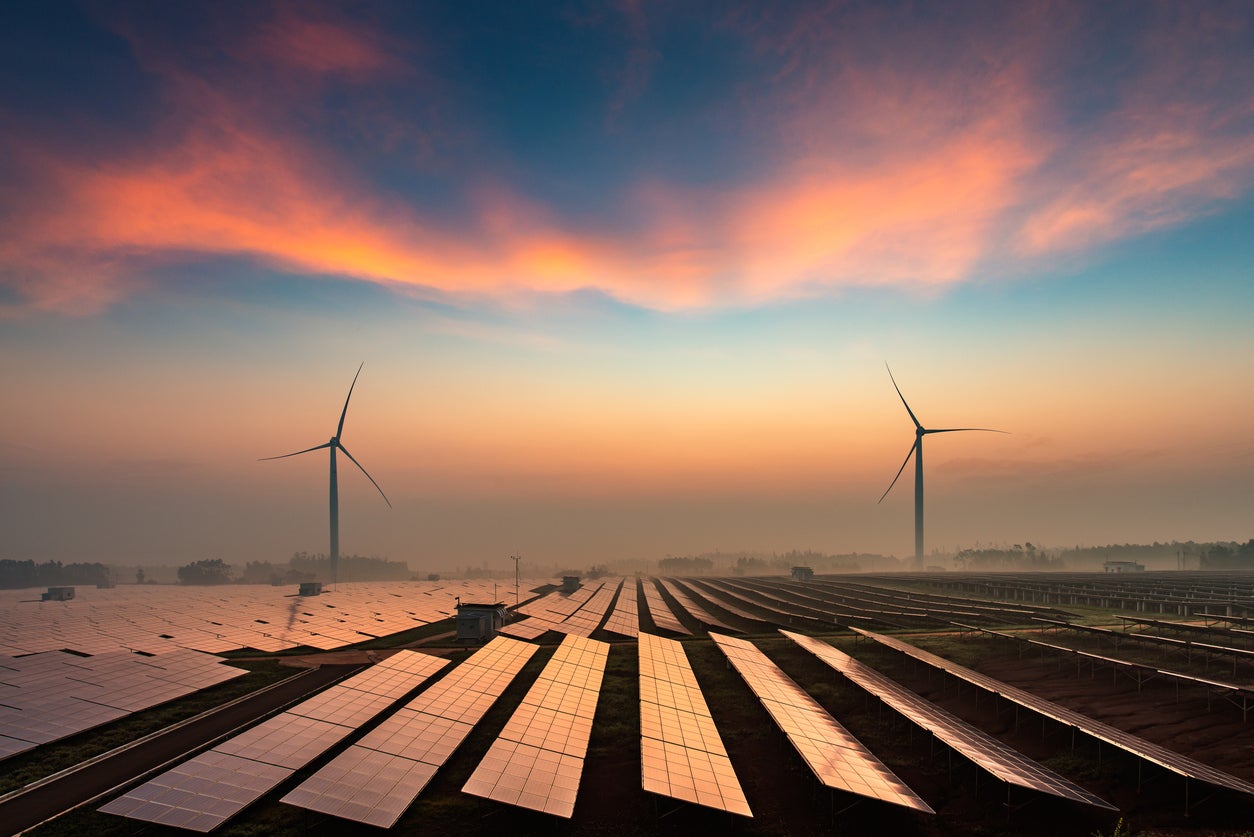
Vladimir Putin's war with Ukraine has shone a spotlight on the European Union's reliance on Russian natural gas.
The continent imports 90 per cent of the gas it uses, with 40 per cent of that total coming from the natural resource-rich country.
The bloc - and other western countries - have imposed a series of sanctions on Russia and oligarchs close to the president's regime.
They are designed to hit Kremlin-linked billionaires in their pockets, where it hurts most.
Leaders also hope that, as Russians become poorer, opposition to the war will grow, piling pressure on Mr Putin to stop the bloodshed.
But with the price of energy soaring across much of the world in the aftermath of Covid pandemic lockdowns, the EU and much of west has so far been reticent to impose sanctions on Russia's gas and oil industry, although Germany has halted the Nord Stream 2 pipeline.
Russia derives much of its income from these natural resources. Oil and gas provided 39 per cent of its federal budget revenue and made up 60 per cent of Russian exports in 2019.
If the EU and other countries were to place sanctions on these industries, Moscow would inevitably restrict supply, resulting in higher energy bills and petrol prices for consumers.
Mr Putin is all too aware of this and may have been one of the key factors in the timing of his invasion of Ukraine.

With this in mind, The International Energy Agency (IEA) has published a 10-point plan to help Europe reduce its reliance on Russian gas.
1. No new gas supply contracts with Russia
Many of the EU's contracts with Gazprom, a majority state-owned gas company, are set to expire by the end of the year.
These deals equated to around 12 per cent of the company’s gas supplies to the EU in 2021.
The soon-to-expire contracts provide "the EU with a clear near-term window of opportunity to significantly diversify its gas supplies and contracts towards other sources, leveraging the options for imports provided by its large LNG and pipeline infrastructure."
2. Replace Russian supplies
The IEA says the EU should also seek to replace Russian supplies with gas from alternative sources.
"The EU has greater near-term potential to ramp up its liquefied natural LNG imports, considering its ample access to spare regasification capacity," it says.
"LNG trade is inherently flexible, so the crucial variables for the near-term are the availability of additional cargoes, especially those that have some contractual leeway over the destination, and competition for this supply with other importers, notably in Asia."
3. Introduce minimum gas storage obligations to enhance market resilience
Gas storage plays a key role in meeting seasonal demand swings and providing insurance against unexpected events, such as surges in demand or shortfalls in supply, that cause price spikes, the IEA says.
The value of the security provided by gas storage is even greater at a time of geopolitical tensions.
Therefore, the IEA adds, the EU should look to increase capacity in its gas storage.
4. Accelerate the deployment of new wind and solar projects
"In 2022, record additions of solar PV and wind power capacity and a return to average weather conditions are already expected to increase the EU’s output from these renewable sources by over 100 terawatt-hours (TWh), a rise of more than 15 per cent compared with 2021," the IEA says.
"A concerted policy effort to fast-track further renewable capacity additions could deliver another 20 TWh over the next year."
In simple terms, using more renewable energy instead of gas will reduce dependence on Russia.

5. Use more nuclear power
"Nuclear power is the largest source of low emissions electricity in the EU, but several reactors were taken offline for maintenance and safety checks in 2021," the IEA says.
"Returning these reactors to safe operations in 2022, alongside the start of commercial operations for the completed reactor in Finland, can lead to EU nuclear power generation increasing by up to 20 TWh in 2022."
6. Enact short-term measures to shelter vulnerable electricity consumers from high prices
Increases in electricity costs are unavoidable to a certain extent when gas (and CO2) prices are high, the IEA says.
But current wholesale markets create the potential for profits for many electricity generators and their parent companies that are well in excess of the costs related to operations or capital recovery.
Current market conditions could lead to excess profits of up to €200bn (£165bn) in the EU for gas, coal, nuclear, hydropower and other renewables in 2022.
"Temporary tax measures to raise rates on electricity companies’ windfall profits could be considered," the IEA adds.
"These tax receipts should then be redistributed to electricity consumers to partially offset higher energy bills. Measures to tax windfall profits have already been adopted in Italy and Romania in 2022."
7. Speed up the replacement of gas boilers with heat pumps
Speeding up anticipated deployment by doubling current EU installation rates of heat pumps would save an additional 2 bcm of gas use within the first year, requiring a total additional investment of €15bn.
"A shift from gas to electricity for heating buildings could have the corresponding effect of pushing up gas demand for power generation, depending on the situation," the IEA says.
"However, any increase would be much lower than the overall amount of gas saved. Such a shift would also transfer seasonal swings in demand from the gas market to the power market."
8. Accelerate energy efficiency improvements in buildings and industry
"At present, only about 1 per cent of the EU’s building stock is renovated each year," the IEA says.
"A rapid extension to an additional 0.7 per cent, targeting the least efficient homes and non-residential buildings, would be possible through standardised upgrades, mainly via improved insulation.
"This would save more than 1 bcm of gas use in the space of a year and would also bring benefits for employment, though it would require parallel efforts to improve supply chains for materials and workforce development."
9. Encourage a temporary thermostat adjustment by consumers
The average temperature for buildings’ heating across the EU at present is above 22°C. Adjusting the thermostat for buildings heating would deliver immediate annual energy savings of around 10 bcm for each degree of reduction while also bringing down energy bills.
10. Step up efforts to diversify and decarbonise sources of power system flexibility
A key policy challenge for the EU in the coming years is to scale up alternative forms of flexibility for the power system, notably seasonal flexibility but also demand shifting and peak shaving, the IEA says. For the moment, gas is the main source of such flexibility and, as such, the links between gas and electricity security are set to deepen in the coming years, even as overall EU gas demand declines.
"Governments therefore need to step up efforts to develop and deploy workable, sustainable and cost-effective ways to manage the flexibility needs of EU power systems," the IEA says.
"A portfolio of options will be required, including enhanced grids, energy efficiency, increased electrification and demand-side response, dispatchable low emissions generation, and various large-scale and long-term energy storage technologies alongside short-term sources of flexibility such as batteries.
“EU member states need to ensure that there are adequate market price signals to support the business case for these investments."







